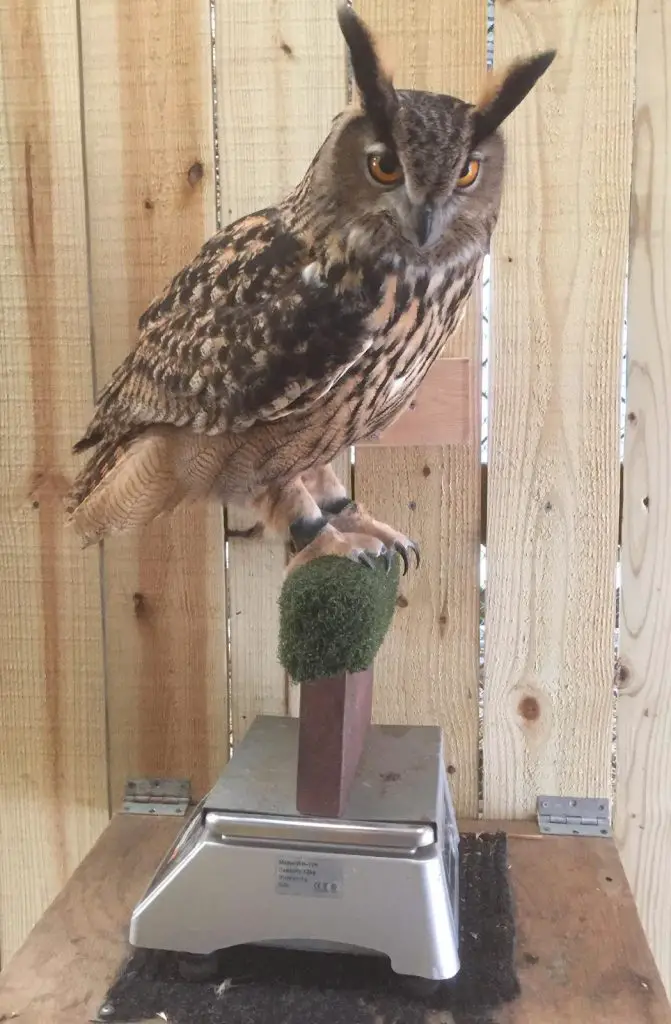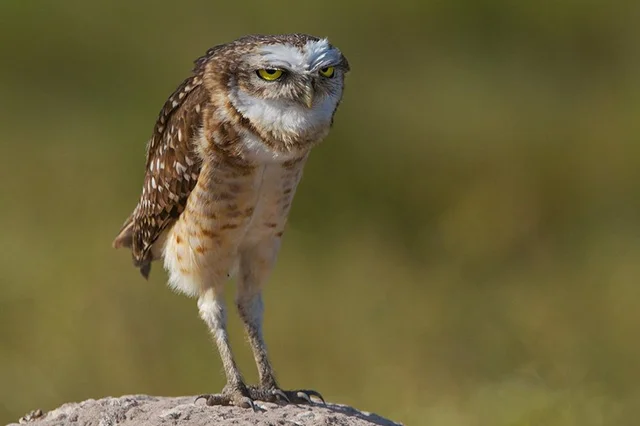Last Updated on: February 4, 2025
Have you ever seen owl legs?
Legs are perhaps the last body part we think about when we see these fierce, mysterious avians with a great sense of sight and sound. We rush to compare their eye color, check for ear tufts, and listen to their bird calls.
But…
You ought to think about this less popular body part because it plays a crucial role in the lives of these birds of prey.
As we discuss owl’s legs, we’ll talk about a few species in North and South America and how having powerful legs makes them different.
Are Owls Legs Different?
Yes, they are, though they have the same components as other creatures, such as knees, feet, and ankles.
We rarely notice this bird’s legs because we focus more on other ID details like plumage and body length.
An owl can live without a neck, as some have one socket pivot connecting the head and the body, but it needs sturdy owl legs to survive.
Owls have thin legs that contrast the size of the rest of the body. On top of that, they have long feet and short thighs adapted to flight.
They can function even when it gets too cold as the lower legs only have bone and tendon, and the top muscles are close to the body. Let’s look at other differences:
a. Feathers
Most owls have thick feathers, so you might never tell where the legs start unless you pay attention. Sometimes, they have a thick covering because of the habitat. For instance, snowy owls have the thickest leg feathers because of the low temperatures of their habitats, so you might never see their long owl legs unless you catch them in flight.
Some owl species don’t have feathers on their legs.
You, therefore, have no reason for not taking a good look at them until now. For example, the burrowing owl doesn’t have feathered legs.
The feathers also protect owls from bites as they wrestle small rodents or small mammals since no animal wants to give in and get eaten without a fight.
b. Strong Talons
Owls use talons to capture and neutralize their next meal. They spread these talons out so they can strike fast and easily. These claws also carry captured prey, and that’s why they need a good grip to support the weight of an animal like a raven or cat. Remember, owls attack even foxes, other owls, and prairie dogs.
An owl’s feet have shorter bone structures than those of other birds, making them stronger to withstand the force exerted by the prey.
c. Swiveling Small Toe
Many raptors have four toes: three toes pointing forward and one toe pointing backward. But, the small toe of owls moves forward and back, which means they can have two toes in front and two at the back of the owl leg.
It gives them a better grip as they perch or grab prey. For example, the great horned owl secures squirming prey with its feet.
The outer toe rotates so it can catch food the size of a raccoon.
d. Actual Length
These species, such as the barn owl, require long legs to hunt with precision by extending their feet to reach prey. That’s why it’s so thrilling to watch owls hunt from a tree.
Leg length helps owls keep their heads and eyes safe so that prey can’t scratch them as they wrestle because it’s not always a fast catch.
How Long Are Owls Legs?
Length is relative as owl legs vary depending on body size. Let’s look at a few common species:
1. Barn Owl

If you want to see an owl with long legs, look for images of barn owls. They look like their long legs start from the abdomen.
This owl’s body length is between 12.6 and 15.8 inches, so it’s medium-sized but larger than a short-eared owl. The buff and gray back is different from the white underside; therefore, you’ll see the long legs.
2. Eagle Owl

The eagle owl has long legs, given it’s among the tallest in this species. Its body length is between 23 and 26 inches. Unfortunately, it isn’t one of the species in North America as it’s in Europe, Africa, and Asia.
3. Burrowing Owls

The owl legs of species that hunt on the ground, such as the burrowing owl, are strong. These grass owls run after insects, snakes, rabbits, and scorpions.
Their powerful legs make them one of the fastest owls, a feature they use alongside the acoustic Batesian mimicry of a rattlesnake as they defend their burrows.
Watch This!
Frequently Asked Questions
Do baby owls have legs?
Yes, they do. When you peep inside a nest and see baby owl legs, the first thing you notice is their pink skin.
As the days go by, the owlet grows some feathers, and the legs turn white or brown. During this process, known as erythrism, the baby owl transfers iron from the blood into the liver. It reduces the high iron levels in the red blood cells.
How long can an owl’s legs be?
Owl legs can grow to an average of 7 to 11 inches long. As we mentioned, the length varies from one species to the other.
What owl has long legs?
Generally, they all have long legs because they need them when hunting. For starters, eagle and barn owls have some long ones. You might see the legs of some birds in summer, but you might never see an owl with long legs in low temperatures as they have heavy feathers over them.
They’re also species with bare legs, such as the bare-legged owl. But, it’s one species you won’t see in North America as it’s only in Cuba and on an adjacent island.
Conclusion
If you think the human-like expressions of owls are unique, you should see long owl legs. The world of birders and non-ornithological photographers can’t get over how long owl legs are.
When you have some time and nothing to do, look for pictures of an owl’s legs online. Videos of these avians flying are even more entertaining. Prepare for a surprise when you see their stomach feathers pull up to leave their legs exposed.
If you can’t get enough images of these avians online, get them in your inbox. Sign up for more birding info.

